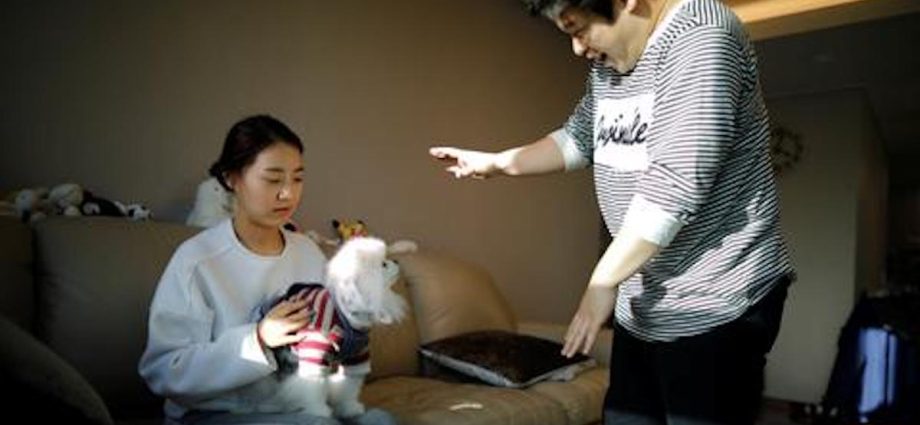
South Korea’s fertility rate — the number of babies born to women in their lifetime — fell again to hit a record low of 0.78 in 2022, the lowest in the world. The country’s fertility rate is forecast to fall to as low as 0.61 in the next few years.
It is an alarming trend, to say the least, because the fertility rate needed to maintain a stable population — replacement-level fertility — is 2.1, meaning that South Korea’s fertility rate is just over a third of the necessary fertility rate to maintain its current population. For comparison, the average fertility rate of member countries of the Organization for Economic Cooperation and Development (OECD) was 1.6 in 2020.
Such a low fertility rate has already made South Korea the most rapidly aging society in the world. The other factor behind the country’s rapid population aging is its rising life expectancy at birth, which was 83.5 years in 2020 — the third highest in the world.
If the current fertility rate persists, the South Korean population – which has already been in decline since 2020 — could fall from its current level of 51 million to as low as 34 million by 2067.
The persistence of an abnormally low fertility rate will have serious consequences for South Korea’s economy. The most obvious problem will be a decline in the economically active population (15-to-64 years old) from 37.4 million in 2015 to 20.6 million in 2065 — a drop of more than 55% in 50 years. Other potential problems include diminishing consumption, waning investment, a budget imbalance (government expenditure on the elderly will soar while tax revenue will decline) and a pension shortfall.
There are several factors underlying South Korea’s low birth rate. First, South Koreans are typically getting married at older ages due to longer schooling — 73.3% of high school graduates enrolled for college education in 2022, perhaps the highest proportion in the world — and working commitments. South Korean mothers’ average age at their first birth was 33.5 in 2022, compared to an OECD average of 28.3 in 2019.
Second, a growing number of people are staying unmarried. Circumstantial factors, such as lack of financial resources and lack of job security, are the main reasons for their unmarried status.
Third, all adults in South Korea are fully aware of the country’s “educational hell.” They themselves were subjected to having no free time, going to a myriad of cram schools after school and being under pressure to excel at school with the failure to do so leading to a sense of guilt and shame.
Fourth, education costs in the country are extremely high. Nearly 80% of students in elementary and secondary education take private lessons. South Korean parents also spend more than US$400 per student per month. The actual figure is believed to be considerably higher and high-income families spend much more than low-income families.
Fifth, there is widespread pessimism over the country’s future. People are more likely to have babies if they believe that their children will have better lives than their own. But that is not the case in South Korea, where there is a widespread conviction that one needs to be economically well-off to be successful. South Koreans believe that education, especially a degree from a prestigious university, is a key avenue to success but are aware that it requires a lot of money to accomplish that goal.
A large majority of students attending elite universities in South Korea come from relatively affluent family backgrounds. This is explained by the fact that high-income families can send their children to the most expensive and best-taught cram schools.
Lastly, the perceived value of having a baby has changed. Many young people, convinced that having babies involves too much work and stress, now want to avoid the financial strain caused by starting families. They also want to have time for themselves and to spend time with partners and friends, to have more time and energy to focus on their careers and to keep their freedom and independence.
The record low fertility rate has prompted the government to implement a number of policies to reverse the trend, spending billions of dollars each year to incentivize parenthood since the early 2000s. Some of the initiatives include cash bonuses for childbirth, child allowance support, subsidies for childcare, extended maternity and paternity leave, free medical check-ups for pregnant women and medical expense support for children.
All these efforts to boost the country’s fertility rate have failed. But some steps can still be taken to alleviate the problem.
Overhauling South Korea’s education system is one option. Parents should not have to spend so much money on private education. Children should have time to play and engage in extracurricular activities. Lower- and middle-class children should have more chances of gaining admission to prestigious universities and to professional degree programs irrespective of parental wealth.
South Korea should also change its immigration policy so that migrant workers, who currently must leave South Korea when their employment contracts end, can obtain permanent residency and citizenship.
Andrew Eungi Kim is a professor in the Division of International Studies at Korea University.
This article was originally published by East Asia Forum. It is republilshed here under a Creative Commons license.

